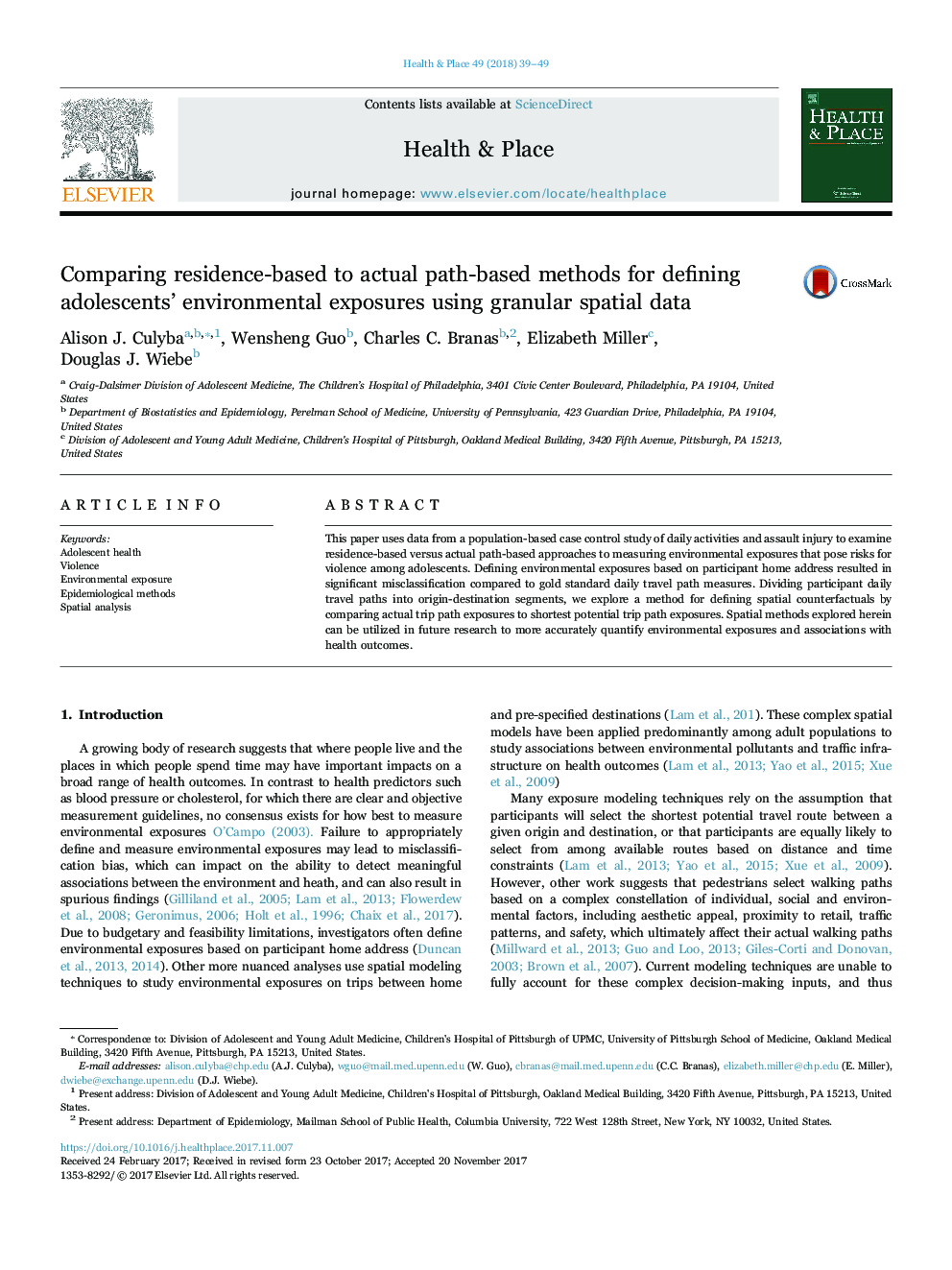| Article ID | Journal | Published Year | Pages | File Type |
|---|---|---|---|---|
| 7457066 | Health & Place | 2018 | 11 Pages |
Abstract
This paper uses data from a population-based case control study of daily activities and assault injury to examine residence-based versus actual path-based approaches to measuring environmental exposures that pose risks for violence among adolescents. Defining environmental exposures based on participant home address resulted in significant misclassification compared to gold standard daily travel path measures. Dividing participant daily travel paths into origin-destination segments, we explore a method for defining spatial counterfactuals by comparing actual trip path exposures to shortest potential trip path exposures. Spatial methods explored herein can be utilized in future research to more accurately quantify environmental exposures and associations with health outcomes.
Related Topics
Health Sciences
Medicine and Dentistry
Public Health and Health Policy
Authors
Alison J. Culyba, Wensheng Guo, Charles C. Branas, Elizabeth Miller, Douglas J. Wiebe,
